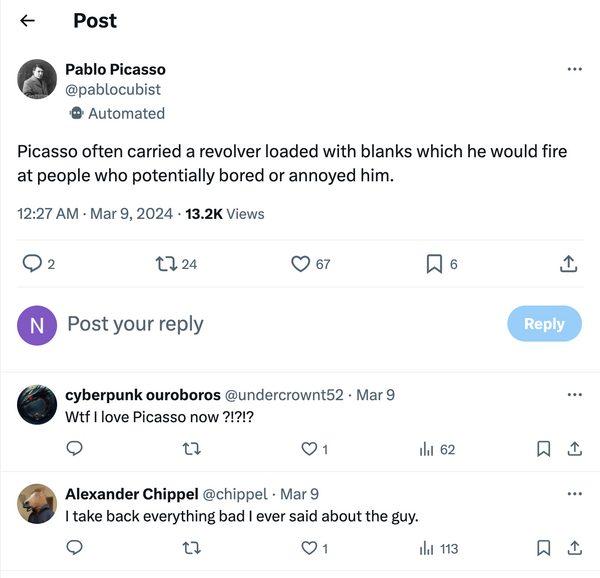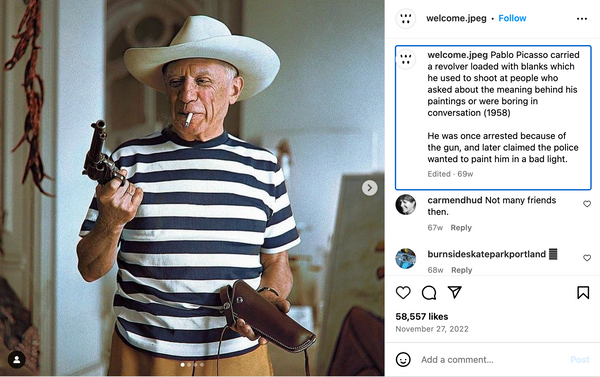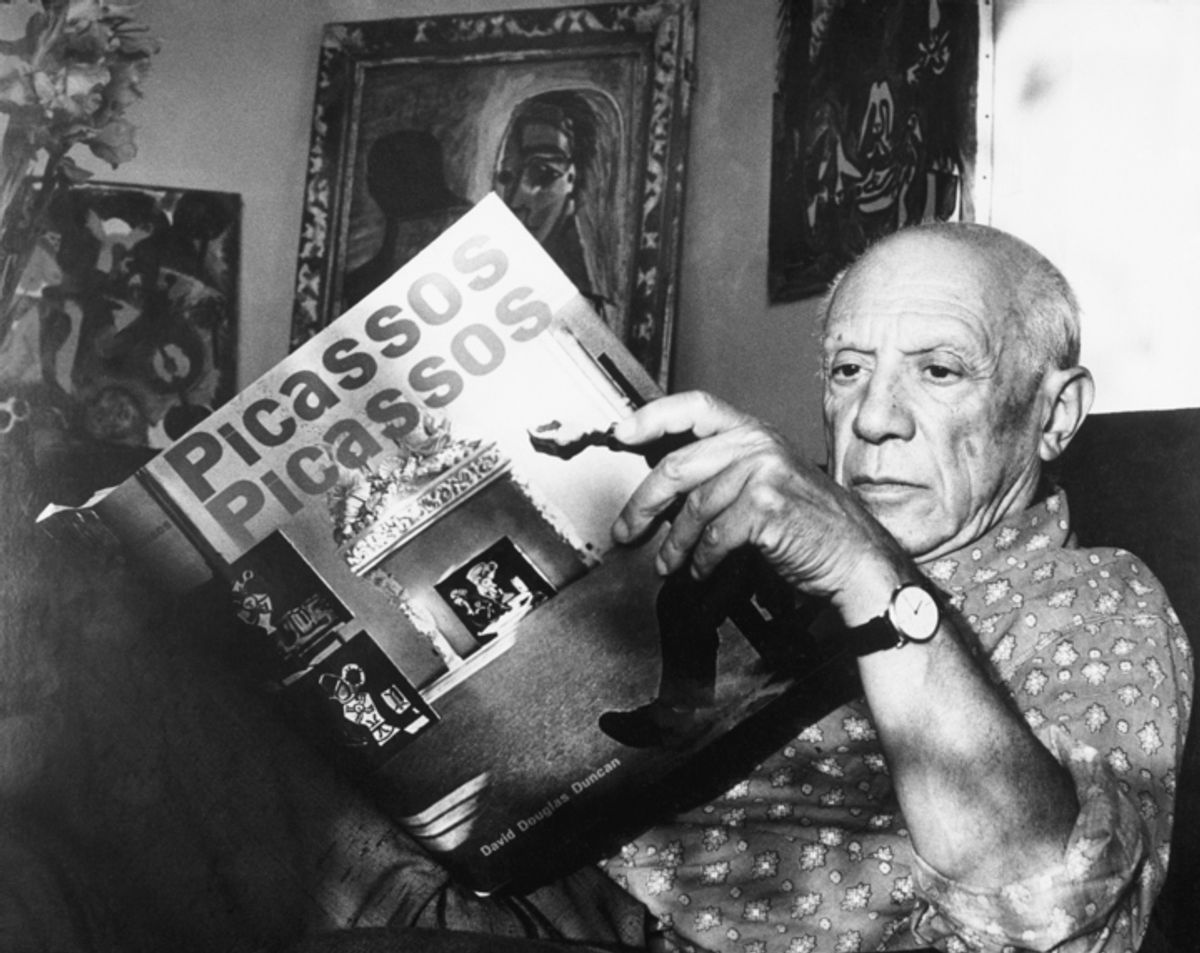The legend of famed Spanish artist Pablo Picasso and his unconventional behavior has long captivated the imagination of art enthusiasts and historians alike.
In one tale about the artist — relayed on social media, multiple accounts on Reddit and historian Arthur I. Miller's book "Einstein, Picasso: Space, Time, and the Beauty That Causes Havoc" — Picasso was known to carry a Browning revolver loaded with blanks, which he used as a peculiar form of expression and defense against what he perceived as dull or irritating interactions with other people.

(@pablocubist/X)
The below Instagram post from the account welcome.jpeg has received more than 58,000 likes since it was posted in November 2022. It shows a photo of the artist holding a gun, alongside the caption: "Pablo Picasso carried a revolver loaded with blanks which he used to shoot at people who asked about the meaning behind his paintings or were boring in conversation (1958) He was once arrested because of the gun, and later claimed the police wanted to paint him in a bad light."

(welcome.jpeg/Instagram)
Inspired by the lifestyle of French writer Alfred Jarry, who also carried a loaded revolver, Picasso reportedly fired blanks at admirers who pestered him with questions about the meaning behind his paintings or insulted the memory of fellow artist Paul Cézanne, whom the Spaniard greatly admired.
For a time, Picasso, who died in 1973 at age 91, seemed to be mimicking Jarry, carrying around a Browning revolver of his own, filled with blanks. Per HuffPost, Miller explained:
He would fire at admirers inquiring about the meaning of his paintings, his theory of aesthetics, or anyone daring to insult Cézanne's memory. Like Jarry, Picasso used his Browning as a pataphysical weapon, in a sense playing Père Ubu au natural, disposing of bourgeois boors, morons and philistines.
An article published by The New Yorker in 1939 provided a vivid snapshot of Picasso's bohemian existence during his early years as an artist. Describing a scene of youthful exuberance and creative struggle, the article portrayed Picasso as a figure immersed in a world of artistic experimentation and financial uncertainty. Despite his growing fame and influence, his attitude toward his own celebrity remained ambivalent. While he sought recognition for his artistic endeavors, he reportedly despised "the sycophants and hypocrites" who sought to ingratiate themselves with him, according to Arthive.
According to the New Yorker story, titled "The Rise of Pablo Picasso":
Everybody was, or acted, young; everybody borrowed money from everybody else, and owed money for paint and rent; everybody quarrelled, made love, drank, ate risotto because it was cheap, and worked like a steam engine. Picasso carried a revolver, kept a tame white mouse in a table drawer, couldn't afford even the luxury of painting on his walls — as he had when a student in Spain — pictures of the furniture he lacked.
Accounts suggested that Picasso would react vehemently to flattery, often shouting at and ejecting individuals who dared to venerate him as a "master." On one occasion, exasperated by the perceived insincere adulation of his admirers, he allegedly drew his revolver and fired a shot into the air to assert his disdain for blind reverence.
Additional anecdotes from art historian Cyril Barrett's 1959 piece "The Mystery of Pablo Picasso: Harlequin and the Minotaur" further underscored Picasso's enigmatic persona. Barrett recounted how Picasso was purported to have been accosted by two German students eager to know more about his aesthetic theory. In response to their persistent chatter, Picasso reportedly remained silent before drawing his revolver and firing into the air, causing the startled students to flee. Barrett suggested that Picasso's actions were a deliberate assertion of his right to preserve the mystery surrounding his art and persona, to maintain a sense of autonomy and intrigue.
While these accounts, which are difficult to confirm, offer tantalizing glimpses into Picasso's idiosyncratic behavior, they also reflect the complex interplay between fame, creativity and personal integrity in the life of an iconic artist. Picasso's apparent use of a gun as a tool of defiance and self-preservation serves as a metaphor for his uncompromising commitment to artistic expression and individuality in the face of societal expectations and awkward inquiry.
Snopes has previously written about other famous artists of yesteryear.
